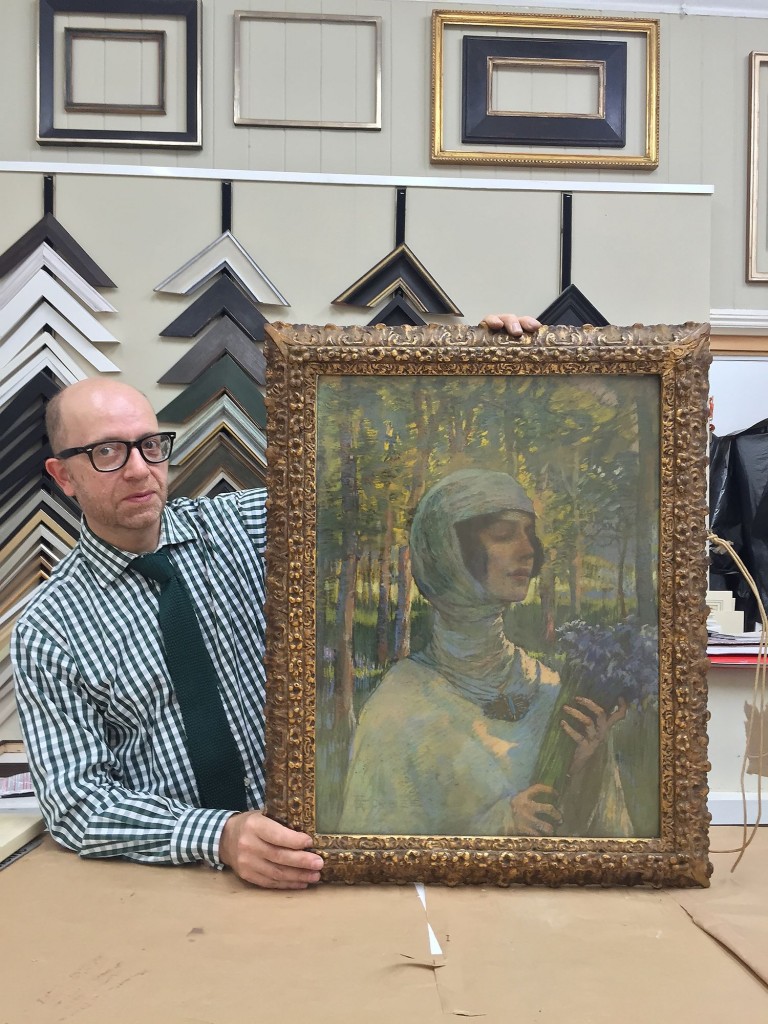
A customer recently brought in an oil pastel by Elizabeth Forbes (1859-1912), a leading woman artist of her day and luminary of the Newlyn School. The picture was in its original gilded ornate frame, with the original glass.

The glass was filthy, stained by exposure to decades of tobacco smoke, and the frame was slightly coming adrift at the corners. The gilding had lost its lustre and some of the gesso and moulding was damaged and deteriorating.
All-in-all, the original framing had done a great job of protecting and presenting a very pretty piece of early 20th Century fine art from a renowned artist.
As we took the frame apart for restoration we discovered various bits of provenance and historical information. This is quite usual of course, and it is important in fine art framing to respect these parts of the art work, and retain and protect them as far as is possible. You’ll often see these items referred to explicitly in both museum catalogues and auction house descriptions. This picture was exhibited by the Pastel Society at the Royal Institute Galleries in Piccadilly in 1902, and was offered for sale for £15 (a bargain, as this was about £500 at today’s values).

It was framed by Dicksee & Co of Liverpool – who were fine art agents and packers. Their labels are fairly common on the works of the Newlyn School. We can assume that amongst other things, Dicksee & Co were the “go-to” framers for the successful artists of the day.
There’s even a note written in pencil on the reverse of the backing board, from framer to artist, explaining that the rather ropey jointed timber sheet used for backing will remain sound and not warp. This frugality has proved to be well-judged, since the work hasn’t required re-framing for over a century, and the board is not warped.

Removing the picture from the nicotine-stained glass the colours spring back into life, and we get a close view of the extraordinary pastel technqiue that made the artist a huge commercial success in her day, and popular and collectible today.
In the finished project we have had the corners of the frame re-jointed with wooden pegs and the broken mouldings repaired, retaining the aged patina of the original, but securing the structure.
Internally the work itself has been loose-mounted to an acid-resistant sheet, and the original glass throughly cleaned, neutralised and re-secured within the frame. New wires and hooks replace the rotten linen string and corroded hooks, ensuring the picture can be safely re-hung. The provenance information and ephemeral labels have been retained untouched.
Conservation is a key goal in this type of framing project.